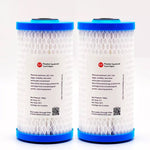You have no items in your shopping cart.
Welcome, fellow Aussies! If you're like me, your mornings are powered by coffee or tea, and you probably rely on your trusty kettle to get you through the day. But, have you ever wondered if there's a more efficient way to get that much-needed hot water without wasting energy or adding to your electricity bill? Enter the hot water dispenser—a handy alternative that's shaking up the kitchen appliance scene. So, which one should you choose? Let’s dive into the pros and cons of both and help you make the best decision for your home. Spoiler alert: You might just find yourself ditching your kettle after reading this!
Table of Contents
- Understanding Energy Consumption in Australian Homes
- How Hot Water Dispensers Work
- How Kettles Work
- Hot Water Dispensers vs Kettles: Direct Energy Comparison
- Environmental Impact: Which Appliance is More Sustainable?
- Cost Savings Over Time: Which Appliance Wins?
- Water Coolers as the Next Step
- Tips to Maximize Energy Efficiency in Your Kitchen
- Making the Right Choice for Your Home

Understanding Energy Consumption in Australian Homes
Australians are increasingly mindful of their energy usage, and with rising electricity costs, it's no wonder that we're paying closer attention to our everyday appliances. The question often arises: does your kettle or hot water dispenser play a big role in your energy bill?
Appliances such as hot water dispensers and kettles might seem small, but their frequent use can add up over time. Understanding how much energy each consumes is key to making an informed decision.

How Hot Water Dispensers Work
Hot water dispensers work by heating water and keeping it at a ready-to-use temperature, so you can pour out boiling water instantly. Most dispensers maintain a constant temperature, meaning they continuously use a small amount of electricity even when not in active use. However, this convenience can come with energy-saving advantages.
In Australian households where boiling water is needed frequently throughout the day—whether for tea, coffee, or cooking—a hot water dispenser can be the more efficient choice. You’re not repeatedly heating and cooling water like you would with a kettle, which can waste electricity. Instead, the dispenser only uses the energy necessary to maintain the temperature.
Client Anecdote: One of my clients, Sarah, a busy mum of two from Melbourne, made the switch to a hot water dispenser because her family always seemed to be boiling water multiple times a day. After a month, she noticed a small but noticeable drop in her electricity bill. She was pleasantly surprised that a simple appliance swap made such a difference.

How Kettles Work
Kettles, on the other hand, work by heating a specific amount of water to boiling point, then shutting off once the water reaches the desired temperature. The downside is that most people tend to fill their kettles to capacity, even if they only need a cup or two of water, leading to wasted energy.
If you find yourself repeatedly boiling water throughout the day, your kettle might be burning through more electricity than you think. However, the portability and quick heating time make kettles appealing for many Australians.

Hot Water Dispensers vs Kettles: Direct Energy Comparison
The energy efficiency of hot water dispensers and kettles depends largely on how they are used. Here’s a closer look:
- Hot Water Dispensers: While they consume a constant trickle of energy to maintain water temperature, they tend to be more energy-efficient for households that frequently use hot water throughout the day.
- Kettles: These are typically more energy-efficient for occasional use since they only heat water when needed. However, frequent use can lead to energy waste, especially when overfilled.
For example, heating water multiple times a day using a kettle can lead to energy loss. By contrast, a hot water dispenser keeps water at the right temperature, ready whenever you need it—without repeated reheating.
Environmental Impact: Which Appliance is More Sustainable?
From an environmental perspective, using energy-efficient appliances is a simple step you can take toward a more sustainable lifestyle. Hot water dispensers, when used correctly, can reduce your household’s overall energy consumption, which translates to fewer carbon emissions.
The kettle, on the other hand, can waste more energy, particularly when overfilled and reheated unnecessarily. Choosing the right appliance based on your usage patterns can make a real difference in your energy footprint, contributing to Australia’s ongoing efforts to reduce energy consumption and fight climate change.
Cost Savings Over Time: Which Appliance Wins?
At first glance, the upfront cost of a hot water dispenser may seem higher than that of a kettle. But consider this: in the long run, you could save more on your energy bills with a hot water dispenser if your household uses hot water regularly. Over the course of a year, those energy savings can really add up.
If you’re looking for ways to make your home more energy-efficient without breaking the bank, a hot water dispenser could be a smart investment. Not only could you save on energy costs, but you’ll also have the added convenience of instant hot water whenever you need it.
Water Coolers as the Next Step
If you’re thinking about upgrading your kitchen’s energy efficiency, why stop with a hot water dispenser? Water coolers are another fantastic addition to Australian homes, offering instant access to cold, refreshing water. Whether you’re looking for bottled water coolers, plumbed-in options, or even the best water coolers for the office or home, check out these collections to complement your kitchen upgrade:

- Bottled Water Coolers
- Plumbed-in Water Coolers
- Best Water Coolers for Office
- Best Water Coolers for Home
Adding a water cooler to your home or office is another way to improve energy efficiency, while also staying hydrated.
Tips to Maximize Energy Efficiency in Your Kitchen
Regardless of which appliance you choose, there are steps you can take to make your kitchen more energy-efficient:
- Boil Only What You Need: Whether using a kettle or a dispenser, avoid boiling excess water.
- Use Energy-Saving Settings: Some hot water dispensers have eco-modes—use these to save energy.
- Unplug When Not in Use: If you’re going away for an extended period, unplug your dispenser to avoid standby energy consumption.
- Consider Complementary Appliances: Pair your hot water dispenser with energy-efficient water coolers to create a more eco-friendly kitchen.
Making the Right Choice for Your Home
Ultimately, the choice between a hot water dispenser and a kettle comes down to your household’s specific needs. If you frequently boil water throughout the day, a hot water dispenser could save you both time and energy. However, if your hot water needs are more occasional, a kettle might still be the better option.
For those looking to reduce their environmental impact and energy bills, investing in a hot water dispenser might be the way to go. And remember, you can always take your energy savings a step further by adding an energy-efficient water cooler to your kitchen or office.









